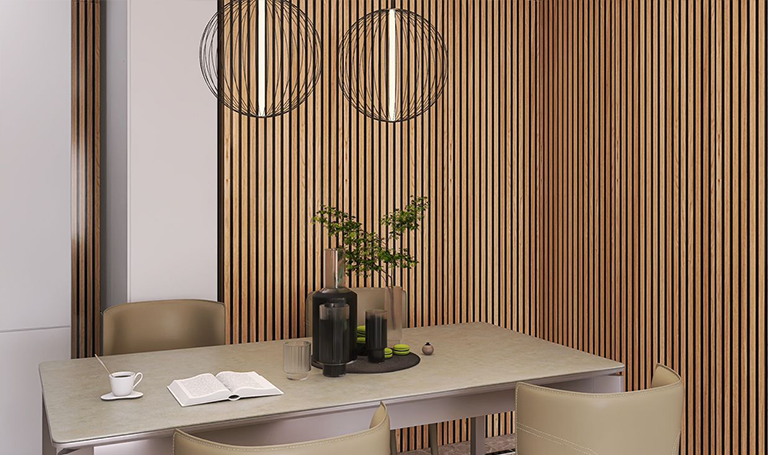
Bring New Life to Walls: A Complete Guide to Painting Modern Wood Paneling
Not only has wood paneling become obsolete, but it’s also experiencing a significant resurgence in homes seeking texture, charm, and character. You’re at the perfect place if you’re looking at old wood walls and wondering how to bring them back to life. Painting contemporary wood paneling may produce a dramatic aesthetic improvement while preserving the coziness of wood textures if you have the proper preparation and equipment. This detailed guide helps you get the look you want, whether it’s clean minimalism or rustic elegance. Selecting the appropriate
can significantly impact the preparation of older walls for a flawless finish.
Why Update to Modern Wood Paneling?
Modern wood paneling combines the classic feel of genuine wood with contemporary colors, textures, and methods. Paneling adds architectural interest, and painting it is a clever method to keep it seeming modern and new. Experts recommend using
to ensure long-lasting adhesion and color retention when working with modern wood paneling.
Benefits of Painting Wood Paneling
- Brightens dark or dated rooms
- Adds modern appeal without replacing walls
- Affordable way to renovate
- Customizable with endless color options
Ideal Rooms for Painted Paneling
- Living rooms and family rooms
- Home offices and libraries
- Hallways and stairwells
- Bedrooms with accent walls
Step-by-Step Prep for Painting Modern Wood Paneling
Great results start with solid prep work. Here’s how to get your paneling ready for a makeover. Before painting, it’s crucial to invest in quality
to achieve smooth and even coverage.
Clean Thoroughly
Please ensure the wood is clean and free of oil before you begin. For stubborn dirt, use TSP (trisodium phosphate) or a moist cloth and mild soap. This method promotes excellent paint adhesion.
Fill and Sand
Examine the panels. After using spackle to fill up any nail holes or flaws, softly smooth the whole surface using 220-grit sandpaper. This eliminates any excess shine and produces a primer-ready surface.
Materials You’ll Need
Here’s what you should gather before beginning:
- Mild detergent or TSP
- Spackling compound
- Sandpaper (220-grit)
- Stain-blocking primer
- Paintbrushes and rollers
- High-quality latex paint
- Painter’s tape and drop cloths
How to Paint Modern Wood Paneling Like a Pro
The fun starts when the preparation is over. You may get a perfect, long-lasting finish by following these procedures.
Apply a Primer
When painting contemporary wood paneling, a high-quality primer is necessary. To prevent the penetration of wood tannins, use a stain-blocking latex primer. For flat surfaces, use a roller; for grooves, use a brush.
Paint Your Panels
You can start painting after the priming has dried. Choose an interior latex paint that is long-lasting. Apply the same method: roll the flat sections and brush in the grooves. For consistent coverage and depth, allow for two coats. Email campaigns remain one of the best ways to follow up with home renovation prospects.
Optional Finishing Touches
Are you looking for extra durability or added visual flair? Consider these optional upgrades:
- A clear polyurethane sealer for added protection
- Matte or satin finishes for a modern look
- Accent walls in bold hues
- Contrasting trim for a crisp outline
Quick Tips for Best Results
- Always work in a well-ventilated area
- Remove outlet covers before starting
- Test paint samples before committing
- Let each coat dry thoroughly before applying the next
Design Ideas with Painted Wood Paneling
Painting provides an opportunity to customize your room, not only to hide wood. Here’s how to use modern wood paneling to elevate your interior:
Color Inspirations
- White or cream for a bright, airy aesthetic
- Deep navy or charcoal for a dramatic touch
- Soft greige or sage for a calming, earthy palette
Creative Layouts
- Vertical stripes to add height
- Horizontal boards for a contemporary feel
- Board-and-batten for dimensional design
Common Mistakes to Avoid
When working with modern wood paneling, steer clear of these pitfalls:
- Skipping primer (your paint may peel or discolor)
- Using flat wall paint (less durable and harder to clean)
- Rushing between coats (leads to streaks and uneven finish)
- Not filling grooves or holes thoroughly
FAQs About Painting Modern Wood Paneling
Q: Can all types of wood paneling be painted? Yes. Whether your paneling is solid wood, veneer, or laminate, it can be painted with the right preparation and primer.
Q: Should I remove the paneling instead of painting? Only if you dislike the texture. Painting modern wood paneling preserves its character while providing a contemporary upgrade.
Q: What paint finish works best? Satin or eggshell finishes work best for modern wood paneling. They offer a subtle sheen and are easy to clean.
Q: Will the wood grain still show? Yes, especially with lighter paints. This texture adds charm and warmth, making modern wood panels visually interesting.
